Michelle Barker's Blog: Hearing Voices, page 2
December 23, 2023
The Long Way Back

I’ve been away from this blog for a while, though not by choice. Early in the summer, an innocent fall I took while running resulted in a concussion with symptoms that lingered for months and threatened to ruin my life.
Anyone who’s had post-concussion syndrome knows that’s no exaggeration. Over weeks, then months, I watched everything I love slowly slip away from me. I eventually recovered thanks only to a huge coincidence: my running partner happened to be reading a memoir written by a woman who had been suffering from a concussion for years and had found her way out.
I’m writing about it here in case anyone is in the same situation (although if you are, you’re probably not sitting in front of your computer screen). If you’re not, sorry, this post will bore you. Listening to someone talk in detail about an injury is a bit like listening to them tell you about the amazing dream they had last night. But if you know someone who’s suffering from lingering concussion symptoms, please pass this post onto them. It might change their life.
The book is called Run Towards the Danger by Sarah Polley, and her miracle cure came through a doctor in Pittsburgh named Micky Collins. A lot of concussion doctors have claimed over the years to be the one who cured Sidney Crosby. Micky Collins actually did.
Concussions come in different shapes and sizes, so I can’t speak to the ones that aren’t like mine, but I happened to have the same type that Sarah Polley had (vestibular). One evening, my running friend came to pick me up for a dinner out. When she saw me wearing sunglasses under a darkening sky, she said, “You have to read this book.”
I was being treated by a vestibular physiotherapist who had helped to some extent, but her prognosis (“this could take a year”) had filled me with despair. I had nothing more to lose. I couldn’t exercise above a certain heartrate threshold, couldn’t work for longer than fifteen minutes at a time, couldn’t go outside in daylight, couldn’t focus on conversations, couldn’t go grocery shopping without my head feeling like it was filled with bees. And I had just been offered the biggest opportunity of my career—to teach at a conference I’d dreamed of working at for years—but had no idea how I would manage it.
Collins’s approach to concussion treatment is unlike anything you hear about in Canada. Instead of worrying about thresholds, he advocates ‘running toward the danger.’ Every single thing your brain tells you that you shouldn’t be doing because it will hurt—going out in daylight, sitting in front of a screen, going to big-box stores—he makes you do them, one after the next, over and over, basically until your brain gets bored of them and stops treating them like threats. He makes you ditch the sunglasses and screen filters, stop taking those rest breaks you think you need—in short, he tells you to throw away the crutches and walk, even though you think it will be impossible.
If that sounds, um, unfun—it is. But if it also sounds too good to be true—I can tell you, it works. Within two days, I saw noticeable results. I attended the conference, which was hard at first, but midway through the weekend I felt completely fine. After several weeks I was still struggling with lingering dizziness whenever I exercised beyond a certain threshold, but I pushed through that and am now symptom-free.
For anyone who’s living in quiet misery with a concussion, with seemingly no way out—THIS is the way out. It feels terrible at first, but if you persist, things turn around quickly. You WILL get better.
July 24, 2023
Food and Sleep

It won’t come as any surprise that food and sleep are critically important for endurance athletes. The surprise is that some people still more or less ignore them.
And by some people, I mean me. I’ve applied the food and sleep rules to myself in ways that are wildly inconsistent and illogical (cue the circus music). I was eating a lot on my rides and almost nothing on my runs. As for sleep…huh? Why?

On my long rides, I eat a lot. I refuse to consume gels. They might take up less space, but they’re gross and I feel like they’re responsible for most gut issues in a race. Load up on those and no wonder you feel like crap after a couple of hours.
Instead, I eat real food: mini potatoes rolled in salt; peanut butter and jam sandwiches; baby food; rice krispie squares; gummies; quinoa bars. A friend suggested salted pasta. I tried it last Saturday and it was so great that I’ve made it a permanent addition to the list.
50g of carbs per hour is what my coach says I need. She made me list out what I eat on my rides and check the number of carbs each item contains. I was certain I was eating enough. But I was wrong.
On my long runs, I wasn’t even coming close to consuming 50g of carbs per hour, nor was I hydrating enough. I’d bring a little packet of Welch’s gummies and some salt and vinegar chips and call it a day. However, on my last few runs, I made sure to consume what I was supposed to, and—no surprise—I felt so much better.
I now force myself to eat a proper breakfast before a long workout, even if it’s six a.m. and a bowl of Cream of Wheat is the last thing I feel like having.
The night before a particularly long workout, I make sure to get to bed early. I can’t overemphasize the difference a good night’s sleep makes to the quality of your training. This is something I have really neglected in the past. But Garmin being Garmin, it tracks everything, so I started paying attention. That was when I realized I wasn’t sleeping enough.
I also guard my rest days religiously and take regular recovery weeks that are actually recovery weeks and not just pretend. Whether I feel like I need them or not. I used to be an expert at pretend recovery, because how can doing less be a good idea? But of course, it is. Rest is where the gains are made. It’s one of those counter-intuitive things, like running slow to get fast.
Yes, these things are obvious now that I know them.
Yes, I’m a slow learner.
I tended to operate on the “exception” basis, i.e. what’s true for other people couldn’t also be true for me. But no: five hours of sleep is not enough, not for me or anyone else. Scarfing down a piece of toast before a long ride is not enough. Maybe I was able to get by on doing this for a while, but I’m getting older, and my body is becoming less generous about cutting corners. If I don’t get enough food or sleep, I feel it.
These are easy, solvable problems, so I figured…why not solve them?
Happy training!
June 15, 2023
Valley Fondo Race Report

This was my first time doing the Valley Fondo and I opted for the 85km route. It’s early in the season, and my coach didn’t think the 120k would be a good idea yet. Of course, left to my own devices, I would have done the 120k anyway, but since I promised myself that I would listen to her advice, I did what she said. I now believe she made the right call, as she invariably does. I was trained for 85k. Anything more and I would have risked injury—something I’m trying my hardest not to do. As she likes to remind me, I need to keep my eye on what’s important.
I was a little nervous when I found out the event was sold out. It’s the start line that freaks me out: all those bikes so close together, and not everyone there is a strong rider. In the Victoria Fondo, the only one I’d done before, the start for the longer distances was earlier and there weren’t many people. That would not be the case with this race.
The morning began with more stress than it should have. Parking was madness, which we’d been warned about but had chosen to ignore. That was dumb. We were stuck in a long lineup of cars, which meant by the time we finally got our bikes ready and made it to the corrals, it was getting close to start time. We’d hoped to use the bathroom before our ride, but the lineup was about forty people deep and there wouldn’t be enough time to wait it out.
I was riding with a group from my cycling club, and we decided we’d stop at the first aid station and use the bathroom there instead.
All my fears about the start line were unfounded. It was fine. Everyone rolled out slowly and in control. The route is fast at the start, and I was riding with strong riders and felt good, so I worked at keeping up to them. In retrospect, this might have been a mistake. I usually pace myself better in a race, but I was also a little cocky about the shorter distance and felt like pacing wouldn’t be an issue. Hmm.
When we arrived at the first aid station, we discovered that A LOT of people had the same idea we did about bathroom breaks. There was a grand total of three porta-potties and a lineup of at least twenty people. That was disappointing. It added an unnecessary fourteen minutes to my final race time. Live and learn. If I’d arrived earlier in the morning, I would have had time to use the bathroom before the race started and wouldn’t have stopped at any of the aid stations.
Another lesson: 85k is indeed a distance that requires pacing—at least for me. By the time I hit the last 20k or so, I started to run out of gas. By then I was riding alone, which probably didn’t help. With a group I would have gotten a nice pull through that headwind. Alone, I had to battle it by myself. But aside from those unnecessary fourteen minutes, I was pleased with my time. Average speed overall of 26.2km/h which is fast for me.
It was a beautiful route. I’m glad I did it and would do it again next year. But it also showed me I’ll need to get in some serious climbing before the Victoria Fondo in August.
There is work to be done. What else is new?
May 27, 2023
Tempted to Skip Your Swim?
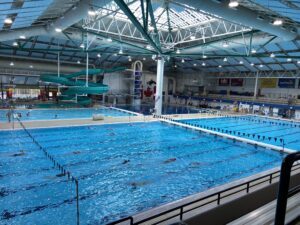
Here’s why you shouldn’t (she says, talking to herself).
Truth: I won’t skip a run unless I’m basically dead; ditto for a ride. But when it comes to swimming, I’m an expert at talking myself out of going. Maybe it’s the thought of the cold water. Maybe going back and forth a million times just isn’t all that fun. More often than not, I have to arrange to meet a friend at the pool just to make sure I show up.
The thing is, as soon as I get in the water, I’m fine. More than fine. I remember that I enjoy swimming. If I’m doing a pre-planned workout, it actually is fun. And because I swim at a community pool where I see mostly the same people, I almost always run into someone I know.
That should be motivation enough to show up. But there are some solid physical reasons why it’s better not to skip your swim.
First of all: ankles. If you have stiff ankles from running (which I do), there is no better way to loosen them up than by going for a swim. You won’t realize it while you’re doing it. It’s when you get out that you notice how great your ankles feel.
Second: swimming is a form of cross-training that doesn’t involve any impact. Duh, I know, but we (I) tend to forget how important that is. You get so many benefits (such as improved lung capacity and cardiovascular fitness, improved mobility, improved endurance—the list goes on) and your body doesn’t have to take a pounding.
Third: and I recognize this isn’t true for everyone, but if I have any lower back pain, swimming is the cure. In fact, swimming is the reason I can run and ride in the first place.
Fourth: it’s a great stress reducer—if the pool isn’t busy. If it is, this could backfire in a hurry.
I can’t think of a single time I’ve come out of the water feeling worse than when I went in.
So…if you’re tempted to skip your swim, don’t.
You can thank me when you’re out of the water.
PS: I’ll be back a couple of times a week to reread this post before packing my swim bag.
May 19, 2023
Being Coached
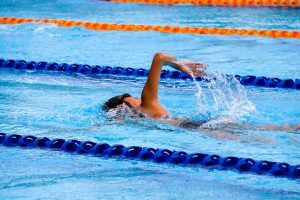
marcus-ng-570012-unsplash
It might seem obvious that you should hire a coach to help you train for big (or even small) races, but not everyone uses a coach. As a friend put it, having a coach is the most money he’s ever spent to not do workouts. Just because you have a coach doesn’t mean you’ll do what they say. And not all coaches are created equal. Some are more hands-on than others. Some might be too intense.
Unless your coach is monitoring your heart rate and can see how hard you’re pushing yourself, much also depends on what you choose to tell them: how tired you really are, how much your foot actually hurts, how hard you’re really working (or not). The body doesn’t lie—but you might. If you exaggerate or fudge, you’re the one who’ll suffer in the end, because they’ll keep ramping up the workouts on the assumption that you’re fine and you’re doing everything they tell you—and not significantly more. Or less.
Besides which, coaching can get expensive. There are all kinds of workouts available online, some of which can be downloaded for free. So, why pay for a coach? Is it worth it?
Well, I’ve gone it alone and I’m now being coached, and I can say that for me, yes, it’s worth every penny.
I’m not the type of person who needs extra motivation to work out. What I need is more like a leash. Someone to keep me under control and stop me from doing stupid shit. When I hired a coach, I made the decision that I would listen to her—otherwise, what’s the point? If I think I know better than she does about how to get from here to a marathon finish line (or the start line, for that matter), I might as well go back to coaching myself.
The thing is, I don’t know better. After the Ironman in Florida, I was dealing with a variety of old and new issues that I knew I couldn’t handle alone. I needed a strength training program that would focus on my weaknesses, and I needed someone to ease me back into running in a controlled, cautious way, so that my knee wouldn’t blow up. That’s what I’m paying for.
Cookie-cutter workout plans won’t do that. They’re not designed for someone coming off an injury, and there’s no accountability. No one emailing me to ask how my knee feels after that run on a scale of 1 to 10.
I’m too keen to follow a plan. You put numbers in front of me, and I’ll do what’s on the page. That can be a good thing; it can also be very much NOT a good thing. Slowing down is not my favorite pastime. Being cautious, having patience? Ditto.
While going it alone gives you the freedom to move workouts around to suit your schedule or the weather, it also gives you the ability to fudge on things you shouldn’t be fudging on—like recovery weeks (yes, you need them) and strength training (doesn’t matter if I don’t do it three times a week, does it? Yes, it does) and running more than you’re supposed to.
My experience so far with having a coach has been excellent. The progression has been slow and steady, but guess what? It’s working. I was skeptical in the beginning, and maybe even a little frustrated, but I’m a true believer now.
Again, it’s not for everybody, and you do have to find the right person, but once you do, it’s a game-changer.
November 16, 2022
The Post-Race Blues
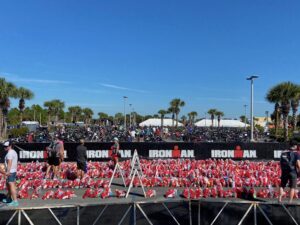
Well, if I thought my depression after the Whistler Ironman was a one-off, I now know I was wrong. The post-race blues are a real thing, and they’re terrible.
“I hate everything,” I said to my daughter on the phone yesterday. “Even the things I normally love, I hate. All I want to do is lie in bed in a dark room.”
It’s not just me. She feels exactly the same way.
In fact, when I Googled Post-Ironman Depression, a long list of articles came up. After the race is over, it feels like a loss. In fact, it feels like an addiction that you’re trying to kick cold-turkey and you suddenly find yourself in withdrawal. Apparently, the hormones that are stimulated by intense exercise are also the ones that, when you don’t have enough of them, cause depression. So, it’s no surprise that we’re feeling like this now that our fifteen to twenty hours per week of training have suddenly diminished to zero. No more endorphins, no more scheduling long rides, no more visualizing the finish line. It’s over. We’re done. Time to move on.
No wonder Ironman offers discounts a few days after the race. They know how to hit us at a weak moment.
The one thing I can’t do is throw myself back into training. My body is still tired. I’ve been to the pool a few times and had to drag myself through the water. What I really want to do is go for a run (surprising after that crap marathon I had), but I know I shouldn’t. So, I’m holding off, trying to concentrate on work and being a normal human and not curling up in a dark corner and eating ice cream.
It’s a weird combination of emptiness and purposelessness—and it’s the closest I ever come to true depression. This time I even expected it and thought, forewarned is forearmed. Nope. Makes no difference. I still feel like trash.
I don’t know what the answer is. Maybe I just have to put my head down and power through, know that there’s an end to this somewhere and I will feel better. It helps just knowing that this is something everyone goes through.
In the meantime, I’m binge-watching The White Lotus and catching up on the social time I’d denied myself before the race for fear of catching Covid. Those things are good.
Off-season training is coming. This too shall pass.
November 8, 2022
Ironman Florida 2022 Race Report

We did it! This was Ironman #2 for me and my daughter, though we both thought this one felt harder—but that’s likely because we forgot (or blocked out) the pain of Whistler.
The race in Florida involves an ocean swim, so we spent all week eyeing that ocean and wondering what it would give us. For most of the week it was as calm as glass. But on Friday, the day before the race, the wind picked up and the water was wild.
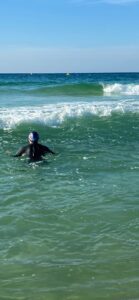
The swells would have been perfect for bodysurfing, but they were not so good for a four-kilometer swim. We went for a practice swim in it and prepared ourselves mentally for what we feared we’d face on Saturday morning.
Sure enough, when Saturday arrived, the conditions hadn’t changed.
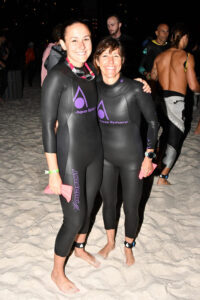
I’ve never dreaded a swim more in my life. Pushing through the surf that crashed onto the shore was the first challenge. Sighting the buoys was the second. Most of the time when I picked up my head to sight, either I was in a trough or the buoys were.
People were pretty bunched up, so there was a lot of kicking and smacks to the head. We had to fight for our space in the water.
And then there were the jellyfish. A LOT of jellyfish. It was impossible to avoid them. At one point, I realized I’d been stung on the cheek. But there was nothing I could do about that, so I set it aside and kept swimming.
The hardest thing was getting out of the water after the first loop AND THEN GOING BACK IN TO DO IT AGAIN.
However, I was thankful for the swim training we’d done. We went to several VOWSA open water swims at Kits during the summer because we knew the conditions were usually rough and everyone started together—meaning, we got used to choppy, crowded swimming. And we did several long lake swims and swam with Masters, so we felt strong.
All of that is to say, I didn’t panic. I knew I could do it. I just didn’t enjoy it.


The transitions were long in this course—much longer than Whistler—and involved a lot of time simply running to collect our stuff and get to the change tents.
The first hour or so on the bike was a bit of a mental challenge, but I expected that. You look at your watch or computer and start calculating how many hours you still have to go. That is not a helpful way to get through a long ride. But then I remembered it always takes me about forty-five minutes to settle in, and eventually I did.

The ride was the best part of the race for me. We trained for the conditions we knew we were going to face—a lot of flat windy roads. Plus, I had no mechanical issues, so that was lucky. But it was hot. At a certain point I felt myself overheating, so at the next few aid stations I asked one of the volunteers to douse me with cold water. It helped. I also made a point of drinking a lot. Heat stroke is 100% preventable, and I was determined it wouldn’t happen to me.
What was great on the bike: the Coke in my special needs bag and a few extra-strength Tylenols. It’s the magic combination.
What was disgusting: the orange Gatorade they handed out at aid stations. Yuk. It reminded me of the stuff they make you drink when you’re pregnant and testing for diabetes. Eventually I had no choice but to drink it, but I mixed it with water to make it a little less disgusting.
I was very pleased that I still had so much life left in my legs by the end of the ride. We had done three 160km training rides in the space of four weeks, and I think that made a big difference.
But then came the marathon.

Yeah, I’m laughing now.

I was not trained for this run. I’d had a major foot issue for several months thanks to a broken toe that threw a bone out of place, so I couldn’t put in the time I needed to make this leg of the race tolerable. I knew it would be a dumpster fire, and it was. You can’t cheat a marathon. Well, you can’t cheat any part of this race. If you’re not trained, it’s going to suck, and you might not make it to the end.
The marathon was—in a word—horrible. I managed to walk-run for the first 25km, which was longer than I’d expected to do it. I purposely kept it slow in order to stretch it out as long as possible. I knew that even at that slow pace I would still be faster than walking.
I wore my Asics because they’re comfortable over long distances, but by 25km my feet were aching. I had put band aids in my special needs bag and considered stopping to bandage my feet but decided not to bother. That turned out to be a good decision. My feet had started swelling up on the bike, for reasons I still can’t figure out, though I suspect it might have been from jellyfish stings. By 25km, they were so covered in blisters that if I had taken off my socks and shoes, I might not have put them back on again. I saw one guy walking the marathon barefoot, shoes in hand. I was thankful that wasn’t me.
After that point, I walked for a while and then started playing games to get me through. One minute on, one minute off. Walk to this pylon, run to the next one. The run course was two loops of a flat out and back, which might sound easy, but in fact it was soul-deadening. The only thing that kept me going was the wonderful spectators playing music, making jokes, and cheering us on.
By the time I neared the finish line, I found myself feeling incredibly emotional. This race had been a battle. It was a long, hard day. But as my friend put it, it didn’t beat us. We beat it. And that felt good.
I held it together as I ran down the finish chute, but when I saw my daughter waiting for me at the end, I broke down and cried.
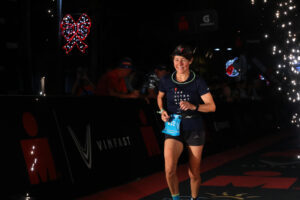
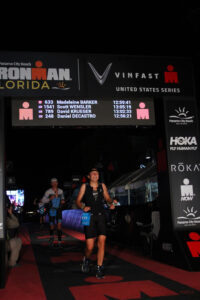
What did I learn from this race?
Well, I would never travel home the day after. Never, never, never again. It was a nightmare. The day after the race you feel like trash. You’re hungry, but then not. Exhausted, but can’t sleep. My legs were so sore I didn’t dare bend down or I wouldn’t get up again. My feet were so blistered I could only wear sandals.
I will do whatever it takes to train properly for the run next time. I know I have a good marathon in me. I just have to make it through training without getting injured.
Foundational strength training is something that will be getting a lot more attention next time around.
Also, let me say this for the record: there is nothing in the world that a person will want to eat by the time they get to the 25km mark of the marathon. Anything you put in your special needs bag for the run is bound to end up in the garbage. This is not true of the bike special needs. That’s key. Choose your treats carefully. They will see you through to the end. But by the time you’re over halfway into the marathon, all you’ll want is what they’re already offering at the aid stations: chips, Coke, and chicken broth. Maybe an orange slice. So, don’t waste your time. Carry Tylenol and band aids with you and don’t bother with special needs on the run.
Why did I not put spray sunscreen into my transition bags? I don’t know.
But there are some things we did right. Our pre-race-day meal was one of them: white rice, chicken breast, steamed vegetables, eaten at around 2PM, with only a small dinner later. We also slept a lot the week before the race because we knew we wouldn’t sleep the night before.
Training for the conditions we knew (or feared) we would be racing in was incredibly helpful. And, using TriBike Transport to send over our bikes and gear alleviated a lot of stress for us.
It’ll be a while before I can face another peanut butter and jam sandwich, and I won’t be lacing up my runners anytime soon. But we’re already planning the next one: Chattanooga 2024, we’re coming for you!
October 17, 2022
Are We Having Fun Yet?

My daughter and I are finally nearing the end of the build phase of training. What does life look right now?
Well, there are a lot of wrappers: Rice Krispie square wrappers, gummy wrappers, A&W wrappers, banana peels. It’s all either training fuel or post-training pig-out. We spend a lot of time eating, and not all of it is healthy.
My apartment’s a mess. Work is chaotic. I need to do laundry. Sometimes I go to bed at 9PM and sleep for ten hours.
Fitting everything in is the biggest challenge, because it’s not just the workouts that have to be squeezed in around work. It’s massage, and stretching, and rolling, and chiropractor appointments, and, yes, sleep.
My skin hates me. My legs hate me. My shoulders mostly hate me. I fall asleep in the middle of the day.
But things are starting to wind down. The bikes have to be tuned up and then I have one more long ride before I drive them down to Seattle for transport to Florida. We’ve done our last open water swim. I’ll still be doing a fair bit of running because my run training consisted of a series of disasters and I’m only now feeling better and am ridiculously behind. Better late than never, I suppose, but I’m not sure how that will look on race day.
To be honest, I’m not sure how anything will look on race day. If the weather is bad, the swim and bike will be miserable. I might not make the cutoffs. Even if the weather is good, I might not make them. It’s such a long race, anything could happen: gut issues, flat tires, who knows? I’d like to say I’m ready, but as a friend has said (and it’s my favourite quote about this race), you’re never ready for Ironman. It’s true. No one is. All you can do is train as consistently as you can and hope for the best.
We’ve been exceptionally lucky with the weather. We’ve been able to bike and swim outside right up to the middle of October, and while I wouldn’t call yesterday’s water warm, it was still warm enough to swim in for over an hour.
We’ve also been exceptionally lucky to be able to train together. There have been many long rides where I would have called it and gone home, but for having my daughter there to keep me going.
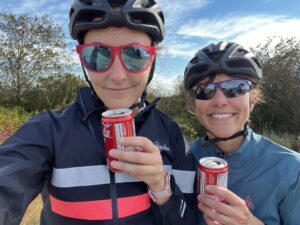
I know how fortunate I am to do this with her. I appreciate every moment we get to spend together, even when they’re tough. Maybe especially then. When we stop to stretch after 140km of riding and encourage each other to get the last twenty done—it’s pretty wonderful.
And even though I complain sometimes about being tired or sore or behind at work, I wouldn’t change this for anything. When I swim at the lake on a quiet Sunday morning, when I start an early ride and the moon is still shining on the water, when I go for a run (any run)—I am grateful for this process.
It’s hard, but it’s worth it.
October 1, 2022
Training Lessons and Life Lessons
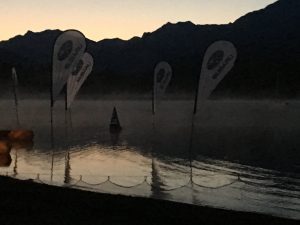
Five weeks to race day and it seems I’m still figuring out this whole process and learning new things. The training would be going well—if I was Meat Loaf. Sadly, there are three components to this race, and at least one of them is guaranteed to be a train wreck.
But there’s not much I can do about that now. Life lesson? Acceptance. I hate acceptance but I’m not being given a choice.
Ironman training tends to offer many such lessons, but I’ve also learned some practical training hacks these days. Here they are, in no particular order:
Eat a big breakfast before a long ride. This might seem obvious, but when you’re up at five-something and out the door before seven, a big breakfast is about the last thing you feel like having. Eat it anyway.Take a swimming lesson. I’m consistently shocked by the difference between what I think I’m doing in the water versus what I’m actually doing.When it comes to riding, you can probably do more than you think. When it comes to running, you should probably do less.You can’t always get what you want. The Rolling Stones warned us about that a long time ago, but I’ve never liked that song. Unfortunately, training will almost never look the way you’d hoped it would. Things go wrong. You make decisions that in hindsight seem bone-headed but at the time seemed like a good idea. That’s just the way it is (see Acceptance).Err on the side of caution. Know the difference between a little muscle soreness and the beginning of an injury. Experience is the teacher here. It also helps not to pretend it’s a little soreness when you know damn well it could turn into an injury but you want to push through anyhow (see Acceptance).If you do get injured, be patient. Let the healing take the time that it needs. I’ll repeat that for my own benefit. BE PATIENT. I hate patience, too. But the training process consistently forces me to practice it.Stop caring about Strava. No one cares about your Strava results except you. Really. If you have to do a run/walk with results that will embarrass you, who cares? Only you.Buy new tires. They wear out. With fresh tires you’re less likely to get a flat.However, just in case: practice changing your tires. Practice a lot. Know how to use your equipment. Buy more C02 if you need to and use it at home a few times. Ask someone who works at a bike shop to teach you a few tricks.If you’re recovering from an injury and need to pay attention to your body, run alone. Running with other people is more fun but it’s also distracting and can cause you to ignore the niggles that you’re supposed to be looking out for.A long ride (for me) burns about three thousand calories. It’s important to replenish the deficit. I never used to bother eating a proper lunch. I do now.Practice what you’re going to do in transition. What order will you do things in? Do them that way over and over in training so they become automatic and you’re not flying around trying to get it together while the clock is ticking.The combination of Tylenol and Coke (the drink, not the drug) on a long ride might be the best invention of all time.That’s it for now. We’ll see what October brings.
In the meantime, happy training if you’ve got a race coming up—and happy off-season if you don’t.
August 23, 2022
Tour de Victoria

Tour de Victoria start line
Last weekend I had the amazing experience of riding the Tour de Victoria. It’s a stunning course that winds through a variety of landscapes and neighborhoods and was well worth the trip over. But it also taught me a number of things that I needed to learn—or remember.
I was nervous about this ride. It was my first fondo, and I’ve avoided mass rides like that for a reason: I never liked the idea of starting in a group. The potential for accidents seemed too high. All those wheels so close to each other. One inexperienced rider is all it would take to make us topple over like dominoes, and I could easily be that rider.
But the Victoria Fondo is billed as a ride, not a race, and it seemed like it would be a lot smaller than the Whistler Fondo. That gave me a bit of comfort. I held my breath and signed up for the 100km distance—not what I wanted, but I’d been having lower back issues on and off for months and decided to play it safe and listen to my body.
Luckily for me, my back issues cleared up before I left, so I thought, okay, if I’m listening to my body, my body is telling me I can do the 140km ride. That was the distance I really wanted to do. Still, I was nervous. The Victoria course is challenging—1800m of elevation, with some 15% grade climbs, and I hadn’t done a lot of climbing this year. But I decided even if I had to be the clown who walked my bike up the steep hills, I’d do it. As we checked in on Friday afternoon, I changed my distance to 140km and tried not to second-guess my decision.
Best-case scenario? It would be the ride of a lifetime. Beautiful sights. Great climbing. I’d ride into the finish chute with gas left in the tank and it would be a great confidence-builder for Ironman.
Worst case? Accident at the start. Accident somewhere along the way. Terrible back pain. Walking up the hills. Having to get the broom wagon to pick me up and take me back. But I pushed those doomsday visions out of my mind.
The morning of a race is always the worst for me. My stomach doesn’t like it. No matter what I eat, it’s upset. That morning was no different. But when we got to the start line, I saw there were fewer people there than I’d expected. The 160 and 140km rides started earlier than the others, and it seemed like those longer distances weren’t very popular. That was a comfort. Then I made friends with a woman who’d done the ride before and she reassured me I would be fine. I remembered my best-case scenario and decided to believe her.
The countdown began, the horn blew, and we were off.
As soon as I started riding, I realized something important: I knew how to do this. It was just a ride. There was nothing scary about it. I’d done it a million times. I remembered this was exactly my experience in the Ironman as well. I was terrified until I got into the water and took those first few strokes. Within a very short time, I settled down, because I realized I had trained for that race and I knew how to do it, and all the fears I’d built up around it were nonsense.
The Victoria course was indeed tough. There was a lot of climbing, some technical descents, and a patch of gravel that I definitely didn’t appreciate. But I did not walk my bike, I did not come in last, and I did not need the broom wagon to pick me up. There were no accidents (that I saw, anyway). People were friendly. The food at the aid stations was amazing. The ride itself was incredibly beautiful. My back was tired by the end, but I think everyone’s was. Six hours is a long time to be on a bike. Still, I got to the finish chute with lots of life in my legs, and that was extremely encouraging for what lies ahead in the coming months.
At the finish line, I met my friend, and we devoured our burgers and fries and relived the great moments of the ride. It was a fabulous experience. I will definitely do it again next year.
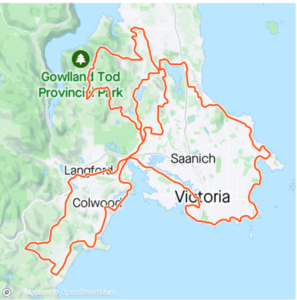
Choosing the 140km course was the right decision. At the end, I felt like I’d accomplished something. I was pleased with my nutrition and pacing and pleased with what I’d learned along the way: I can do this. It’s what I’ve trained for.
The next morning, I went for a long recovery swim in Elk Lake and a bit of a run, and then ate all the things and slept like the dead. Yes, I fell asleep yesterday afternoon in the middle of reading a manuscript (no reflection on the manuscript—it was great, but I was exhausted), but I’m back to normal now and ready for another week of training.
Hearing Voices
This is a blog for writers and readers who love to hear voices. ...more
- Michelle Barker's profile
- 61 followers



